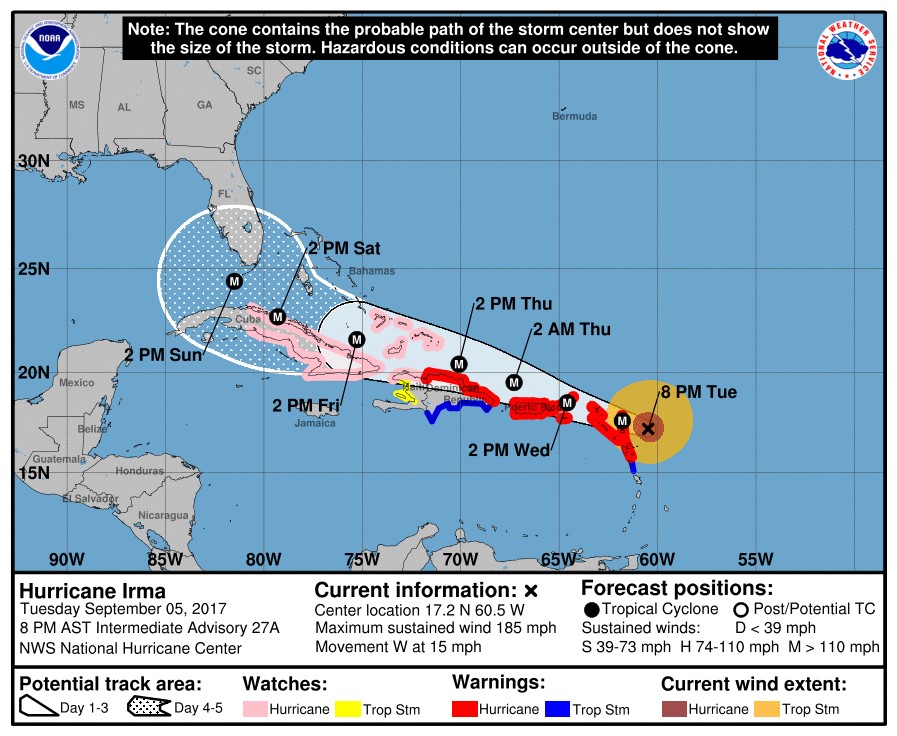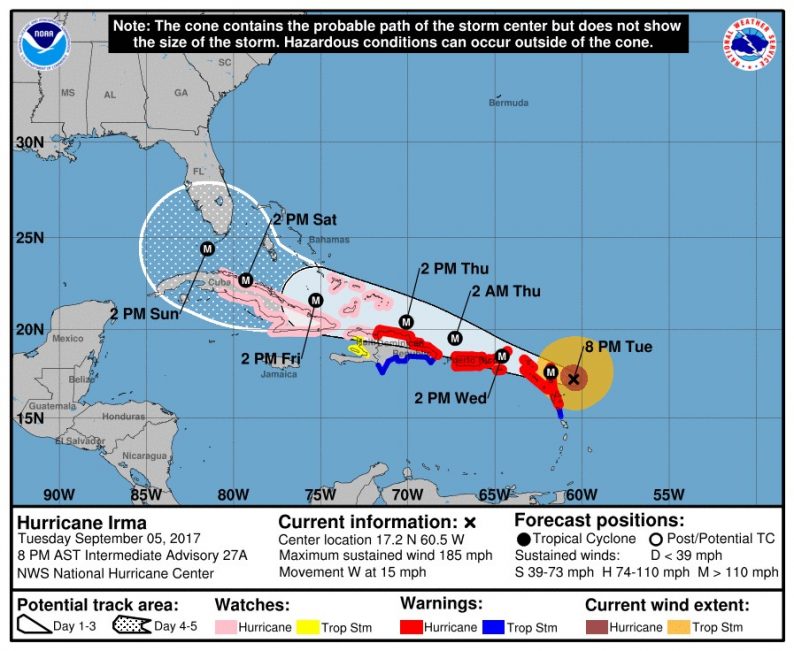The stock market had a minor move lower on Tuesday in the first day back from the Labor Day weekend. This is the start of the weakest month of the year. For some reason, the North Korean threat is now being considered an issue again even though the market ignored the missile launch by trading with little volatility on Friday. It’s a questionable tactic to always blame any weakness on North Korea. It’s even more questionable to claim this is a big crash, just for clicks on articles; a 0.75% selloff isn’t a big deal, no matter what the circumstances are. I consider the selloff to partially be driven by hurricane Irma which is one of the strongest storms ever recorded and is setting its sights on Florida. When you combine the impacts of Harvey and Irma, a big chunk of the country will be at a standstill in September. With the government put in a position where it should act, the fact that it is polarized makes matters worse. FEMA is currently almost out of money, so the Congress will need to make changes for the government to help out in Florida.
To be clear, the chart below of the hurricane forecast only implies the eye will stay within that cone 60%-70% of the time. However, the market works off of probabilities, so it will start to price in economic weakness now. A Florida and potentially Gulf Coast storm means a large portion of the south will be in rebuilding mode. This will take out a big portion of consumer spending and cause jobless claims to spike like they did during hurricane Katrina. Home Depot stock has seen moderate improvements because of hurricane Harvey. If you’ve done some extra research into the storm, buying Home Depot makes sense. It can also be used as a good hedge against the storm if it does severe damage. The great part about this hedge is Home Depot stock won’t crash if Irma goes out to sea.

The worry about any shock to the financial system is what could occur in the market as a result. Specifically, the short volatility trade has become more popular than ever. If all these trades unwind at once, there could be a liquidity crunch. Problems with liquidity are why markets fall very sharply. Most sane people wouldn’t sell stocks when the market is down 40%. The reason they do so is because they’re in the position where if they lose any more money their fund could close or they are already seeing redemptions. The chart below does a great job of showing how much speculation has gone into the short volatility trade. At this point, none of the other bubbles have reached the size of the increase the short volatility trade has reached. The total increase is already larger than any other bubble besides bitcoin. Technically, calling bitcoin a bubble is immature, but it has had extreme speculation.













Leave A Comment